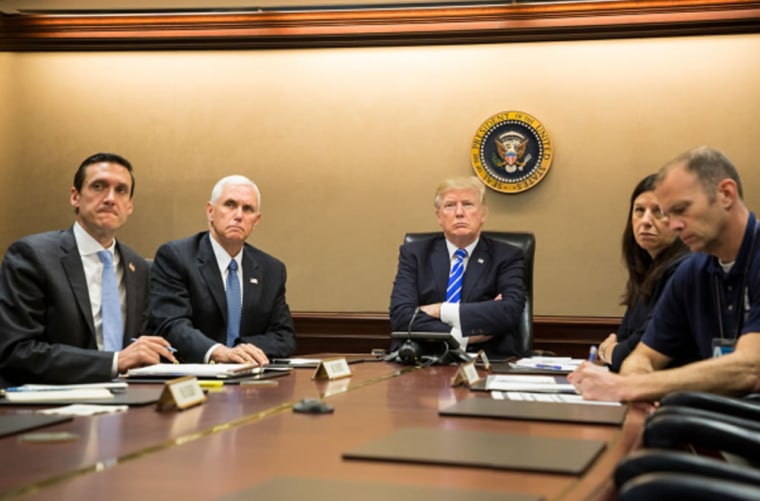Last week, the New York Times reported that Donald Trump strode into the Situation Room for a meeting with the coronavirus task force on a Saturday in early March. The report explained, "He didn't stop by the group's daily meetings often, but he had an idea he was eager to share: He wanted to start a White House talk radio show."
Evidently, the president wasn't kidding. As the pandemic started taking a brutal toll on his country, Trump showed up at a task force meeting thinking about how he could spend two hours a day, every day, hosting his own radio show from the White House.
The plan, such as it was, didn't come together, reportedly because the president "did not want to compete with Rush Limbaugh."
But it's worth pausing to appreciate the degree to which the plan evolved into something else.
The Times published a new report overnight, noting Trump's daily routine includes several hours of cable news viewing in the morning, followed by his arrival in the Oval Office "as late as noon." He doesn't devote two hours a day to a radio show, preferring instead to invest nearly as much time -- and in some cases, even more time -- into his White House press briefings.
Mr. Trump rarely attends the task force meetings that precede the briefings, and he typically does not prepare before he steps in front of the cameras. He is often seeing the final version of the day's main talking points that aides have prepared for him for the first time although aides said he makes tweaks with a Sharpie just before he reads them live. He hastily plows through them, usually in a monotone, in order to get to the question-and-answer bullying session with reporters that he relishes.
Not to put too fine a point on this, but the purpose of the White House press briefings on the coronavirus pandemic is, at least in theory, to provide journalists and the public with information about the government's efforts to address the crisis.
Except Donald Trump, displaying a classic post-policy indifference, doesn't really have any information to share. The president has time to attend the task force meetings, but chooses not to, and he has time to review and prepare briefing materials, which he appears to consider perfunctory ahead of the Q&A entertainment.
It's not unreasonable to wonder how much better the federal response to the pandemic would be with a capable president more engaged with the task at hand.
